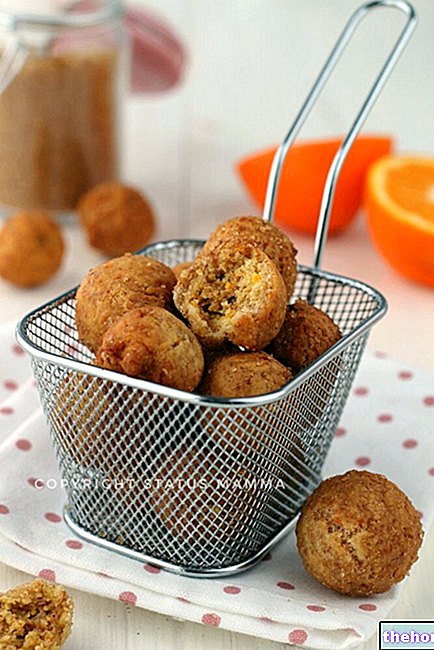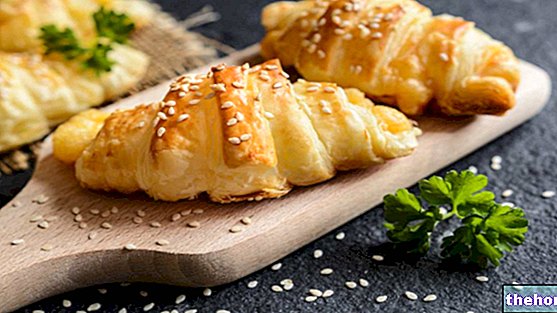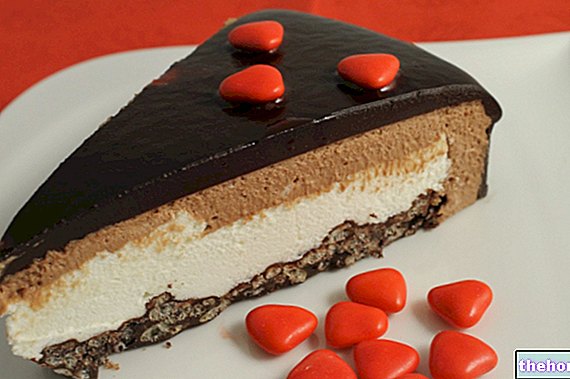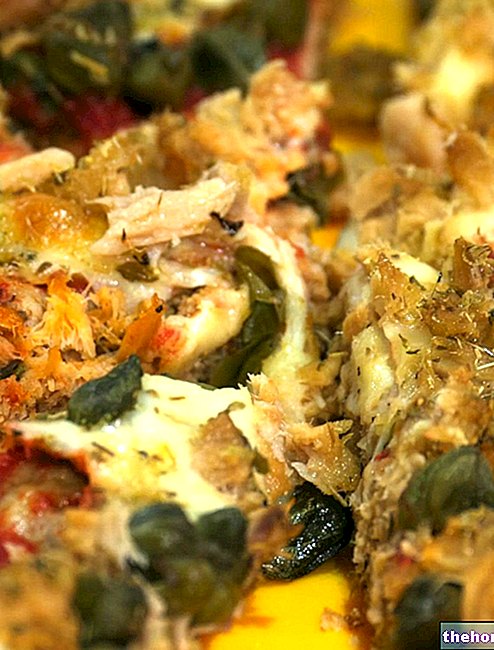Spring: time for picnics and parties with friends! In addition to sandwiches and pizzas, I will fill my basket with lots of slices of a fantastic quiche with eggplant and ricotta! I can define this recipe as a "cauldron" of aromas and taste, where the alleged "disorder" has very specific rules to enhance the flavor of each single ingredient. Let's find out what we need for this intriguing recipe!
Video of the Recipe
Problems with playing the video? Reload the video from youtube.
Identity Card of the Recipe
- 136 KCal Calories per serving
-
Ingrediants
- 600 g of eggplant
- 30 g of grated Parmesan cheese
- 1 sachet (15 g) of instant yeast
- About 300 g of white flour type 00
- Q.b. of pepper
- Q.b. of salt
- Q.b. of oregano
- 3 tablespoons of extra virgin olive oil
- 100 ml of milk
- 120 g (2 medium) of eggs
- 15 g of pine nuts
- 60 g of sultanas
- 250 g of cherry tomatoes
- 250 g of fresh ricotta
Materials Needed
- Bowls of various sizes
- Large colander or colander
- Casserole
- Chopping board
- Knife
- Wooden spoon
- Donut mold with a diameter of 28 cm
- Brush
Preparation
- Clean the aubergines: remove the stalk and wash them in cold water. Dry the aubergines and cut them into cubes. Combine the pieces of eggplant in a colander, adding a handful of coarse salt. Allow the aubergines to drain from the vegetation water for at least an hour.
Why let the aubergines drain?
In this way the aubergines are "purged" or are deprived of a good part of solanine (a particular potentially toxic alkaloid, inactivated by heat, often also responsible for the bitter aftertaste of the aubergines).
To facilitate the purge of solanine from the aubergines, it is advisable to press them with a weight (eg. Bowl full of water).- After an hour, rinse the aubergines in water to remove excess salt.
- In a saucepan, sauté the aubergines for 5 minutes over high heat, adding a drizzle of oil.
- Meanwhile, clean and wash the tomatoes, then cut them to obtain cubes.
- Transfer the aubergines to a bowl and, in the same pot, sauté the tomatoes for 2-3 minutes, adding a drizzle of oil.
- Combine the cherry tomatoes with the aubergines and leave to cool for 10 minutes. Take about 1/4 of it and set aside for decoration.
- Meanwhile, grease and flour a donut-shaped pan with a diameter of 28 cm.
- Soften the raisins in hot water for 5 minutes.
- Toast the pine nuts in a pan, maintaining a moderate flame, turning them often to avoid burning them.
- Preheat the oven to 180 ° C.
- At this point, proceed with the preparation of the dough. In the bowl with the vegetables, add the milk, eggs, ricotta, grated parmesan, raisins squeezed from the soaking water, pine nuts, salt, pepper and oregano. Gradually combine the flour a little at a time, until you get a pasty consistency, not workable with your hands, but not excessively soft. As a last ingredient, add the yeast for quiches.
The greedy idea
To embellish the savory pie, it is possible to add pieces of stretched curd cheese (eg Monte Veronese cheese, Fontina cheese, Asiago cheese, etc.).- Pour the mixture into the mold and bake in a preheated oven at 180 ° C for 40-45 minutes. Remove from the oven, allow to cool, cut into slices and serve with the vegetables previously kept aside.
Alice's comment - PersonalCooker
After cooking the savory pie, I suggest letting it cool for at least half an hour before cutting it: in this way, it will be possible to obtain perfect slices. , you will be able to fully appreciate the taste. It is fantastic to be consumed cold, but also hot (perhaps reheated after cutting it) it is amazing!Nutritional values and Health Comment on the recipe
The Aubergine and Ricotta Cake is a single dish not too energetic, even if the translation on the side does not take into account the water lost in cooking. The calories come mainly from carbohydrates, followed by lipids and finally from proteins. Peptides are mainly of medium-high biological value, complex carbohydrates and unsaturated fatty acids.
Cholesterol is well present, while fiber is lacking.
The Aubergine and Ricotta Cake is a food that, in the right portions, could also be contextualized in nutrition for metabolic diseases and overweight; on the other hand, it does not lend itself to the diet against celiac disease and lactose intolerance.
The average portion is around 200-250g (270-340kcal).























-nelle-carni-di-maiale.jpg)




